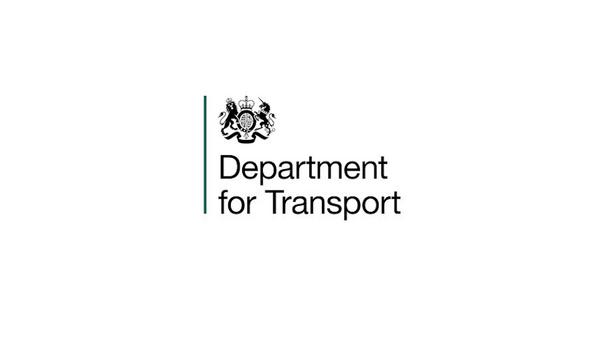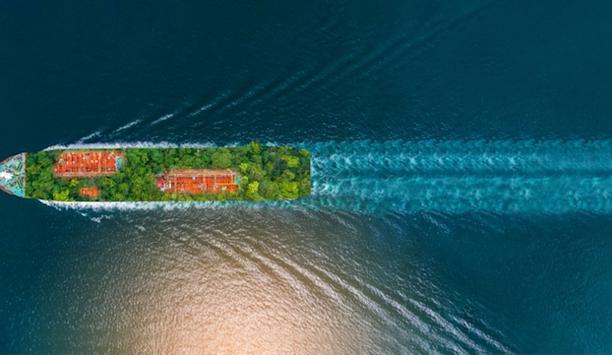IMO - Experts & Thought Leaders
Latest International Maritime Organization news & announcements
Fuels of the future and shipping charge points in harbours are at the centre of a major new strategy to make Britain’s shipping fleet net zero by 2050 and drive growth in coastal communities. The Maritime Minister has revealed the Government’s new goals for all vessels that operate in UK waters and dock at UK ports to be carbon-free and help vessel owners, operators and scientists make emission-free voyages a reality. Maritime Decarbonisation Strategy Maritime Decarbonisation Strategy sets out goals to reduce greenhouse gas emissions by 30% by 2030 Part of the Government’s Plan for Change to propel the UK towards becoming a green energy superpower and drive growth, the new Maritime Decarbonisation Strategy sets out goals to reduce greenhouse gas emissions by 30% by 2030, 80% by 2040 and to zero by 2050. This will see the UK match the highest level of the ambitious goals agreed at the International Maritime Organization in their 2023 Strategy on Reduction of Greenhouse Gas Emission from Ships. Investment in green technologies Investment in green technologies and fuels will cement the UK as a clean energy superpower and encourage a green economic revival at the local level, helping to build high-skilled jobs in coastal communities, delivering a local boon to cities and towns. Under the new strategy, the shipping sector will be brought under the UK Emissions Trading Scheme (UK ETS). This will see operators of larger vessels such as tankers and cruises – which cause the most pollution - pay more for their greenhouse gas emissions. New green shipping technologies The strategy sets out plans to reduce emissions from shipping and raise the use of clean fuels Furthermore, the strategy sets out plans to reduce emissions from shipping and increase the use of clean fuels and technologies, such as hydrogen, electric or ammonia vessels. Later, the Minister will launch the new strategy in Portsmouth with vessel chargeport pioneer ABB and demonstrate how these new green shipping technologies will bring in private investment, create thousands more jobs, and revitalise coastal communities. Such investment has already seen growth in coastal regions, with the £206m of UK Shore funding having already supported over 300 organisations across every nation and region in the UK, and secured over £100 million of private investment, helping to kickstart economic growth. Climate change Maritime Minister Mike Kane said: “Climate change is one of the greatest challenges we face today. Working together with industry and international partners, we are driving down emissions in every corner of the economy." “As part of our Plan for Change, we’re committed to making the UK a green energy superpower, and our Maritime Decarbonisation Strategy will help us build a cleaner, more resilient maritime nation.” Net zero with ambitious targets The government has launched two calls for proof to help inform the growth of measures In addition, the Government is also launching two calls for evidence now to help inform the development of measures needed to reduce emissions at berth, understand the future energy demand at ports and decarbonise smaller vessels. Richard Ballantyne OBE, Chief Executive of the British Ports Association, said: “We welcome today's announcement. UK ports are already demonstrating their commitment to net zero with ambitious targets and investment in new technologies and fuels." Investment and decarbonisation for vessels Ballantyne added: "The UK SHORE programme shows what can be achieved when government and industry work together on shared goals." "We will continue to work closely with the Department for Transport on lowering barriers to investment and decarbonisation for both ports and vessels and this strategy will help set a clear direction and expectations well into the future. We look forward to a continued close partnership built on common aims.” Challenge and opportunity for the maritime sector Chris Shirling-Rooke, Chief Executive of Maritime UK, said: “Decarbonisation is both an enormous challenge and opportunity for the maritime sector, with huge potential for growth, jobs and innovation in our coastal communities, and across the whole of the United Kingdom." "It is vital that our country continues to drive change and chase growth by creating a cleaner and more sustainable future. We welcome the Government’s commitment today and look forward to continuing to work with them on the Maritime Decarbonisation Strategy.” Zero emissions vessels and infrastructure Mike Sellers, Director of Portsmouth International Port, said: “We welcome the announcement of the new Maritime Decarbonisation Strategy, which the port’s masterplan very much aligns with. To help achieve this ambition, we’re on track to become the UK’s first multi-berth, multi-ship ‘chargeport’ by providing renewable plug-in energy when ships are alongside from Spring 2025." "The Seachange shore power project, demonstrates the success of both public and private investment, supported by the government’s zero emissions vessels and infrastructure (ZEVI) fund, driving innovation towards net zero. We’re pleased to show the minister what’s happening in Portsmouth and how this could be a model for ports across the country.” Net zero emissions by 2050 Rhett Hatcher, CEO of the UK Chamber of Shipping, said: “The UK Chamber is proud to have led the way on decarbonisation, publicly calling for the global shipping industry to reach net zero emissions by 2050, prior to the UK Government and IMO Commitments." "Across our sector, we have already invested in new technologies and pioneering innovations to meet our commitments and are pioneering the drive towards net zero. We therefore welcome the Government’s publication of the Maritime Decarbonisation Strategy, as a much-needed successor to the 2019 Clean Maritime Plan." Green transition for UK maritime Hatcher added: “The Government’s strategy must now be matched by delivering the regulatory framework, technology and infrastructure, including a shore power revolution, required to support the green transition for UK maritime, bringing benefits to maritime communities and the UK economy." "We look forward to working collaboratively alongside the government to progress this important agenda and reach our shared goals of a cleaner, more resilient maritime sector in the UK.” Reduce emissions from global shipping Anna Krajinska, UK Director at Transport & Environment (T&E), said: "T&E welcomes the government's commitment to reduce shipping emissions by 30% by 2030, 80% by 2040 and net zero by 2050. It is crucial that ambitious targets are coupled with robust policy measures to slash the UK’s domestic and international shipping emissions without delay." With global shipping accounting for 2% of all emissions, the UK will push for high ambitions at the UN’s next meeting of the International Maritime Organization (IMO) in April, as it develops important measures to reduce emissions from global shipping.
Baltic Exchange, the world's only independent source of maritime market information for the trading and settlement of physical and derivative contracts, and Veson Nautical, a global pioneer in maritime data and freight management solutions, have joined forces to launch the latest version of the official Baltic99 Questionnaire for the dry bulk sector. The questionnaire, which remains the industry standard for collecting and collating detailed information about the global dry bulk fleet, is designed to help owners and charterers share common data requirements to speed up the vetting process when a vessel is put up for hire, facilitate faster trades and ensure smarter pre-fixture decision making. Latest version of the questionnaire The latest version of the questionnaire, available as of now, has expanded its criteria to cover It is also a vital tool to ensure owners and operators supply the data they need as part of their commercial and vetting criteria to ensure they are in line with regional, national and International Maritime Organization (IMO) regulations. The latest version of the questionnaire, available as of now, has expanded its criteria to cover an increasing cadence of requests for safety and sustainability information about bulk carriers. Ballast Water Treatment Systems As a result, the Baltic99 Questionnaire has been designed to help move the global maritime industry move forward on a number of key issues, such as reducing carbon emissions, increasing operational safety standards in the dry bulk trade, and Ballast Water Treatment Systems. In addition, respondents to the Baltic99 Questionnaire are also asked for their vessel’s greenhouse gas (GHG) data, energy and consumption ratings and NoX emissions compliance data. Veson Nautical’s dry bulk information management The enhancements in this latest version of the questionnaire contain tips from the Baltic Council The enhancements in this latest version of the questionnaire incorporate suggestions from the Baltic Membership Council, industry partners and subscribers to Veson Nautical’s dry bulk information management service, Q88 Dry. “Using Q88 Dry to complete the Baltic99 Questionnaire with integrated certificate management makes it easy for owners and operators to share vessel particulars and certificates with your charterers and brokers,” Tor-Arne Berger, Senior Product Manager at Veson Nautical said. Data and enhanced safety requirements “The Baltic99 Questionnaire remains the industry pioneering questionnaire for commercial fixtures in the dry bulk industry,” noted Janet Sykes, Chief Commercial Officer at Baltic Exchange. “This latest revision includes several key developments linked to important emissions-related data and enhanced safety requirements to ensure charterers are hiring the right vessel for their needs and expedite the vessel acceptance process.” Veson Nautical on the Baltic99 Questionnaire “We are pleased to once again partner with Veson Nautical on the Baltic99 Questionnaire as we all work together to drive the maritime industry forward to a more sustainable and efficient future,” Skyes added. Both companies are now urging owners and operators to verify that their vessel data is accurate, complete and up to date.
Under Zero-Emission Accelerating Ship Finance (the Program), which is jointly operated by Development Bank of Japan Inc. (DBJ) and ClassNK, ClassNK evaluated the LNG-fueled car carrier ‘OCEANUS HIGHWAY’ (IMO No. 1046049), owned by Kawasaki Kisen Kaisha, Ltd. ("K" LINE). DBJ provided financing to "K" LINE. In the shipping industry, where environmental regulations are becoming stricter as the industry moves towards decarbonisation, ClassNK evaluates ships based on a comprehensive scoring model jointly developed with DBJ from the perspective of ‘decarbonisation, environmentally friendly performance, and innovativeness,’ and DBJ provides investment and financing. "K" LINE Environmental Vision 2050 policy The project supports initiatives that contribute to the growth of decarbonisation from IR The project supports initiatives that contribute to the transition to decarbonisation from both IR and financial perspectives. "K" LINE is actively promoting various initiatives to support the social transition to low- and zero-carbon under its "K" LINE Environmental Vision 2050 policy. Recently, the company has been focusing on the development of the next-generation fuel ships to realise sustainable and environmentally friendly transportation. OCEANUS HIGHWAY, built by Shin Kurushima Toyohashi Shipbuilding Co., Ltd., was delivered in February 2025. It is designed to reduce environmental impact utilising LNG fuel. Points of assessment of the ship The following points were highly evaluated in this assessment of the ship: (1) The use of LNG fuel makes a 25% reduction in carbon dioxide (CO2) emissions possible compared to conventional fuel oil. (2) Reduction in the emission of nitrogen oxides (NOx), sulphur oxides (SOx), and particulate matter (PM) through the use of LNG fuel complies with the International Maritime Organization (IMO)'s NOx Tier III regulations and SOx regulations. Efforts to contribute toward decarbonisation The ship was given an ‘A’ rating as a ‘ship with high decarbonisation, environmentally friendly performance, and innovativeness,’ recognising that adequate environment-related investments have been made. Through the expansion of the Program, DBJ and ClassNK will support shipping and shipbuilding companies’ efforts to contribute to the transition toward decarbonisation and work together to accelerate the transition toward decarbonisation in the entire maritime industry.
Insights & Opinions from thought leaders at IMO
Ammonia is gaining traction as a future fuel in the maritime industry, primarily due to its potential to significantly reduce greenhouse gas emissions. A key driver for ammonia's interest is that it can be carbon-free when combusted, which aligns with the maritime industry's increasing pressure to meet emissions regulations. However, most ammonia production currently relies on fossil fuels. Transitioning to "green ammonia" production is crucial for sustainability. If "green ammonia" is produced using renewable energy sources, it offers a pathway to near-zero emissions shipping. Safety measures and regulations Ammonia’s volumetric energy density – higher than hydrogen – makes it more practical for onboard storage. However, ammonia is toxic, which requires stringent safety measures and regulations for handling and storage. The combustion of ammonia can produce nitrous oxide (N2O), a potent greenhouse gas. Therefore, mitigation technologies are needed. Building the necessary infrastructure for ammonia bunkering and supply will be a significant undertaking. Developing guidelines for safe use Ammonia is poised to play a significant role in the maritime industry's transition to a future The International Maritime Organization (IMO) is developing guidelines for the safe use of ammonia as a marine fuel. Increasing numbers of companies are investing in the development of ammonia-fueled vessels and technologies. European Union (EU) legislation, such as the EU Emissions Trading System (ETS) and the FuelEU initiative to support decarbonisation, are pushing the maritime industry towards the use of alternative fuels, which is increasing the potential of ammonia. While challenges remain, ammonia is poised to play a significant role in the maritime industry's transition to a more sustainable future. Ongoing research and development Ongoing research and development are focused on improving safety, reducing emissions, and scaling up production. In essence, ammonia offers a promising pathway for the maritime industry to reduce its carbon footprint, but its widespread adoption depends on overcoming technical and logistical challenges. Working toward the future of ammonia Progress is already happening as the maritime industry works toward a future that includes the use of ammonia as a fuel. For example, one project underway aims to be a pioneer in establishing a comprehensive and competitive supply chain to provide clean ammonia ship-to-ship bunkering in the U.S. West Coast. Progress is already occurring as the maritime industry works toward a future A feasibility study is being conducted at the Port of Oakland, Benicia, and nearby major ports on the U.S. West Coast. A Memorandum of Understanding (MOU) between American Bureau of Shipping, CALAMCO, Fleet Management Limited, Sumitomo Corp. and TOTE Services LLC is jointly conducting the feasibility study. "We are proud to share our industry-pioneering expertise in ammonia as a marine fuel to support this study on the U.S. West Coast,” said Panos Koutsourakis, Vice President of Global Sustainability at the American Bureau of Shipping. “Our expertise in developing safety guidelines will support the consortium to address the ammonia-specific set of safety and technology challenges.” More global ammonia developments In another development, three LPG/ammonia carrier ships have been ordered at the South Korean shipyard HD Hyundai Heavy Industries (HD HHI). Danish investment fund European Maritime Finance (EMF) and international shipping company Atlas Maritime have confirmed the order. HD HHI’s parent company, HD Korea Shipbuilding & Offshore Engineering (HD KSOE), revealed the order for $372 million in March 2024. The three 88,000 cubic-metre LPG dual-fuel carriers, capable of carrying and running on ammonia, are scheduled for delivery in December 2027. The vessels will be named EMF Viking I, II, and III. Also, Lloyd’s Register (LR) and Guangzhou Shipyard International have signed a joint development project to design the world’s largest very large ammonia carrier (VLAC). The design of the 100,000-cubic-metre vessel has been assessed in line with LR’s Structural Design Assessment and prescriptive analysis. The gas carrier will have an independent IMO Type B tank for safe carriage of the chemical. Zero-emissions operations The cargo ship, which will be 7,800 dwt, is designed to transport timber from Norway to Europe “As major economies look to co-fire ammonia in their coal power stations to reduce the CO2 footprint of their national energy mix, shipping will play a key role in distributing clean hydrogen-based commodities such as ammonia, thereby supporting nations to meet their Paris Agreement commitments," says LR's Chief Executive Nick Brown. Furthermore, a partnership of companies from Norway has ordered a pioneering short-sea cargo ship that will advance the industry’s ability to provide zero-emissions operations. The cargo ship, which will be 7,800 dwt, is designed to transport timber from Norway to Europe and will be the first to operate on ammonia and electricity. Amogy’s ammonia-to-electrical power system A start-up company focusing on ammonia-to-power technology, Amogy, demonstrated the first tugboat powered by its cracking technology just short of the fourth anniversary of the company’s launch. The trip of a 67-year-old tug along a tributary of New York State’s Hudson River is part of the company’s works to develop and commercialise its technology to decarbonise the most difficult industries. Amogy’s ammonia-to-electrical power system splits, or “cracks,” liquid ammonia into its base elements of hydrogen and nitrogen. The hydrogen is then funnelled into a fuel cell, generating the power for the vessel. Research points to the risks of ammonia The chemical, made of hydrogen and nitrogen, can also be burned as a zero-carbon fuel Today and in the future, ammonia, a main component of many fertilisers, can play a key role in a carbon-free fuel system as a convenient way to transport and store clean hydrogen. The chemical, made of hydrogen and nitrogen, can also be burned as a zero-carbon fuel. However, new research led by Princeton University scientists illustrates that even though it may not be a source of carbon pollution, ammonia's widespread use in the energy sector could pose a grave risk to the nitrogen cycle and climate without proper engineering precautions. Use of ammonia U.S. National Science Foundation (NSF)-supported research found that a mismanaged ammonia economy could ramp up emissions of nitrous oxide, a long-lived greenhouse gas around 300 times more potent than carbon dioxide and a major contributor to the thinning of the stratospheric ozone layer. The use of ammonia could lead to substantial emissions of nitrogen oxides, a class of pollutants that contribute to the formation of smog and acid rain. And it could directly leak fugitive ammonia emissions into the environment, forming air pollutants, impacting water quality and stressing ecosystems by disturbing the global nitrogen cycle. Negative impacts of an ammonia economy The researchers found that the potential negative impacts of an ammonia economy "We have great hope that ingenuity and engineering can help reduce our use of carbon-based energy sources," said Richard Yuretich, a program director in NSF's Division of Earth Sciences. "But caution is advised because of unintended environmental spillover effects that may result from new technology." The researchers found that the potential negative impacts of an ammonia economy may be minimised with proactive engineering practices, but the possibility of risks should not be taken lightly. Addressing an inconvenient reality As interest in hydrogen as a zero-carbon fuel has grown, so too has an inconvenient reality: It is notoriously difficult to store and transport over long distances, requiring storage at either temperatures below -253 degrees Celsius or at pressures as high as 700 times atmospheric pressure. Ammonia, on the other hand, is much easier to liquify, transport and store, and capable of being moved around similarly to tanks of propane. Nonetheless, the cycle of nitrogen is delicately balanced in Earth's critical zone, and extensive research must be undertaken to investigate the repercussions of ammonia combustion and to develop new methods to minimise the risks. Challenges of ammonia as a maritime fuel Here's a breakdown of the key challenges of using ammonia for maritime fuel: Toxicity and Safety: For human health, ammonia is highly toxic, posing a serious risk to human health through inhalation or skin contact. This necessitates stringent safety protocols, advanced leak detection systems, and thorough crew training. Relating to the environment, leaks can also harm aquatic ecosystems, requiring robust containment and mitigation measures. Combustion Challenges: Ammonia's combustion characteristics are less favourable than traditional fuels, requiring modifications to engine design and potentially the use of pilot fuels. Emissions: Combustion can produce nitrogen oxides (NOx) and nitrous oxide (N2O), both of which are harmful pollutants. Mitigating these emissions is crucial. "Ammonia slip" is also a concern, in which unburnt ammonia is released. Infrastructure and Supply Chain: Establishing a global network of ammonia bunkering infrastructure is a massive undertaking, requiring significant investment and coordination. Scaling up "green ammonia" production, using renewable energy, is essential for its sustainability. This requires a robust and reliable supply chain. Storage: Ammonia has specific storage requirements, and onboard storage systems must be designed for safety and efficiency. International Standards Needed: Consistent and comprehensive international regulations and standards are needed for the safe handling, transportation, and use of ammonia as a marine fuel. While the IMO is developing Guidelines, complete and ratified rules are still needed. Economic challenges: "Green ammonia" is currently more expensive than traditional fuels, although costs are expected to decrease as production scales up. Significant investments are needed in research, development, and infrastructure to make ammonia a viable maritime fuel. Also, dedicated ammonia-fueled engines are still under heavy development, and do not have widespread availability. The path to commercialisation Overcoming the variety of technical and other obstacles will require collaboration among governments, industry stakeholders, and research institutions. The timeline for ammonia deployment in maritime applications is actively unfolding, with key milestones happening now and soon. 2025 marks the first trials of two-stroke, ammonia dual-fuel engines on oceangoing ships. Engine manufacturers like MAN Energy Solutions and WinGD are progressing with their engine development, with initial deliveries soon. These pilot projects are crucial for gathering real-world data and building confidence in ammonia as a marine fuel. Development of comprehensive regulations As the maritime industry faces, ammonia is hoped to play a growing role in the fuel mix Gradual commercialisation will follow in the late-2020s as the technology matures and the infrastructure develops. The focus will be on refining engine technology, improving safety protocols, and establishing bunkering facilities in key ports. Wider adoption will likely follow in the 2030s, depending on factors such as the cost of green ammonia, the development of comprehensive regulations, and the expansion of the global supply chain. As the maritime industry faces increasing pressure to decarbonise, ammonia is expected to play a growing role in the fuel mix. Future of maritime It's likely that a combination of ammonia and other alternative fuels and technologies will be used in the future of maritime. Alternatives include methanol, liquid natural gas (LNG), hydrogen, biofuels, electric propulsion, and even nuclear power. Ammonia is a strong contender, bit it faces stiff competition from other promising technologies. The maritime industry's transition to a sustainable future will likely involve a diverse mix of fuel solutions.
The shipping industry is currently navigating a profound transformation driven by environmental concerns, new emissions targets, and evolving regulations. As vessel owners and operators seek to reduce emissions while remaining competitive, determining the right strategy has become increasingly complex. Factors such as alternative fuel availability, fluctuating prices, and an ever-expanding range of technological solutions have made decision-making anything but straightforward. Lack of motivation Regulations evolve, technologies persist to advance, and can differ greatly from port to port The complexity arises from the many moving parts of the industry. Regulations evolve, technologies continue to advance, and infrastructure can differ greatly from port to port. For vessel owners committed to reducing their environmental impact, the challenge isn’t a lack of motivation, it’s finding the most effective way to navigate the myriad of options available. Hybrid propulsion systems One method gaining traction is data-driven decision-making through digital modelling. Rather than making decisions based on guesswork, digital modelling allows owners and operators to create a detailed representation of a vessel and simulate the performance of different strategies or technologies over its lifetime. That way, they can ‘test’ these approaches before committing large investments—particularly useful when considering new fuels or hybrid propulsion systems that are still maturing. Decarbonisation Modelling Service Digital modelling accounts for variables such as vessel speed, power needs, and route patterns Digital modelling accounts for variables such as vessel speed, power needs, and route patterns, applying machine-learning algorithms to find the most promising design or retrofit. It can also show how ideas might evolve if regulations tighten, or new fuels become more practical. At Wärtsilä, our Decarbonisation Modelling Service is designed to guide shipowners and operators through this maze of choices. In developing this tool, we have observed that shipowners required more than an “off-the-shelf” solution. They needed insights based on their own operational data, combined with practical knowledge of costs and likely regulatory trends. Benefits of digital modelling One of the main benefits of digital modelling is its flexibility. Depending on an owner’s goals, whether that’s meeting today’s regulations or planning for future mandates, they can explore multiple options. A fleet operator might compare installing hybrid batteries versus retrofitting for LNG or consider alternative fuels such as ammonia and methanol, or carbon capture. These simulations can factor in fuel prices, available bunkering infrastructure, and even unexpected events like global supply chain disruptions or future carbon taxes. Ship’s actual operational profile At Wärtsilä we often liken digital modelling as the closest thing to a crystal ball At Wärtsilä we often liken digital modelling as the closest thing to a crystal ball. While it isn’t perfect, it significantly improves our ability to make informed decisions and maintain flexibility as market conditions or regulatory landscapes shift. Consider, for instance, a mid-sized container ship operating in Asia. The owner, eager to lower CO2 emissions, might be unsure whether to retrofit for LNG immediately or wait for ammonia infrastructure to mature. Using a digital model based on the ship’s actual operational profile, we can test both scenarios—evaluating fuel price trends, port facilities, and the vessel’s remaining service life. Adopt an interim strategy If the model indicates that an LNG retrofit offers a promising return on investment along with moderate emissions cuts, the decision becomes clearer. Alternatively, if the potential for ammonia becomes evident sooner, it might be wiser to adopt an interim strategy or consider dual-fuel engines. It’s important to recognise that decarbonisation is not merely a box-ticking exercise to meet current regulations; it is a dynamic, ongoing process. With tightening rules from bodies like the International Maritime Organization (IMO) and the EU on carbon intensity, and with cargo owners increasingly demanding transparency, the need for adaptive, data-driven solutions is more critical than ever. LNG with battery storage Others might make quick retrofits to comply with rules and plan for bigger upgrades later Another strength of data-driven decarbonisation is that it is not a one-off activity. As a vessel operates, new information becomes available. Owners can update their models to reflect these shifts, allowing for continuous refinement. This matters because what is optimal now may only be a temporary measure. Some operators use LNG with battery storage for a few years, then switch to next-generation fuels as they become viable. Others might make quick retrofits to comply with regulations and plan for bigger upgrades later. Raw data into actionable insights There is also a perception that gathering and interpreting data is too complex or costly. However, many modern vessels are already equipped with the necessary sensors and tracking systems, and analytics software has become more accessible. The real value lies in transforming raw data into actionable insights. Digital models not only help in planning for evolving market conditions but also enable us to visualise and execute long-term strategies. Portion of global CO2 emissions The real test is balancing environmental aims with retail realities and regulatory forces Shipping contributes a notable portion of global CO2 emissions, giving the industry strong financial and ethical reasons to embrace cleaner operations. The real test is balancing environmental aims with commercial realities and regulatory pressures. With mounting pressure from regulators, customers, and investors, now is an opportune time to adopt data-driven approaches. A continuously updated model provides a practical way to keep up with changes in the market and policy landscape. By integrating operational data, anticipating possible scenarios, and remaining open to new solutions, the maritime industry can cut emissions without sacrificing competitiveness. Shipowners and operators Shipping is an industry that operates on tight margins and these tools must deliver financial stability as well as ongoing compliance. Digital modelling is not just another technical tool; it’s a forward-looking process that helps shipowners and operators steer a confident course in uncertain waters. As more companies experiment with alternative fuels, hybrid propulsion, and emerging technologies, having a robust method for evaluating these options is absolutely essential.
Shipment of goods around the world has continued throughout COVID-19, but the pandemic has afforded unprecedented challenges to the maritime industry. When the pandemic necessitated health restrictions and limited international travel, the impact on crew change practices was monumental. More than a million seafarers work in demanding conditions to support 80% of world trade. Crews were trapped on board vessels for months and months, unable to return home and extending their tours of duty indefinitely. Especially impacted were major crew change port countries in Asia where the majority of seafarers reside. Protective health measures Seafarers are facing extended tours of duty and high levels of fatigue that could lead to a serious accident More than 18 months into the pandemic, the ongoing crew change crisis appears as intractable as the disease itself. Seafarers are facing extended tours of duty and high levels of fatigue that could lead to a serious accident. Thousands have been left stranded on ships beyond the terms of their contracts. If the crisis has an impact on safety, ships may be unable to continue operations, which could threaten the global supply chain. The International Maritime Organization (IMO) has issued a Framework of Protocols for crew change, recently updated, including recommendations such as designating marine personnel as ‘key workers,’ exempting them from travel restrictions, simplifying requirements for identity documents and approvals, implementing screening procedures, and providing basic protective health measures against COVID-19. Key maritime hubs Recognising a shared responsibility to resolve the crew change crisis, more than 800 companies and organisations have signed the Neptune Declaration on Seafarer Wellbeing and Crew Change. The declaration’s action points include recognising seafarers as key workers, implementing ‘gold standard’ health protocols, and ensuring air connectivity between key maritime hubs for seafarers. The declaration also promotes more collaboration between ship operators and charterers to facilitate crew change. The declaration’s action points include recognising seafarers as key workers Data from the 10 largest ship managers reflects a 50% increase between May and July 2021 in the proportion of seafarers onboard vessels beyond their contract expiry. The fast-spreading Delta variant has aggravated the problem, and a report for July suggests the problem is getting worse. The Maritime Labour Convention says the maximum continuous period a seafarer should serve on board a vessel without leave is 11 months. Crew change crisis However, the number of seafarers aboard vessels beyond their contract expiry has risen recently from 5.8% to 8.8%. The International Transport Workers’ Federation (ITF) estimates that more than 300,000 seafarers have extended their working periods on board due to delay in connection of their relief. Factors aggravating the crew change crisis include: There are many stakeholders with shared responsibilities that must be addressed. Collaboration and transparent sharing of information are needed to solve the problem. Working together is the only path to a solution. Lack of vaccine availability. Seafarers in developing countries do not have access to vaccines. Large seafarer nations such as the Philippines are reporting vaccine shortages. Priority access to vaccines is a critical factor in resolving the crew change crisis. Continuing high infection rates and domestic lockdowns. Given the Delta variant and other factors, it is clear the pandemic is far from over. Supply chain demands The crew change crisis has gone on for a year and a half, with the highest cost falling on seafarers, their health, and their families’ wellbeing. The importance of maintaining the global supply chain demands that the industry, the biggest ports and the key shipping transit points around the globe work collectively to address the lingering challenges of the crew change crisis.












